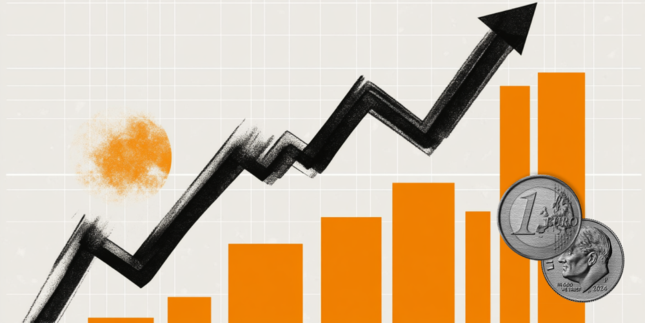- The US Dollar faces slight selling pressure on Monday.
- Traders brace for US GDP, PCE data and ECB decision this week.
- The US Dollar Index looks set to sell off as it is unable to breach through technical resistance.
The US Dollar (USD) is opening the week a bit on the backfoot. Some selling pressure appeared in Asia on early Monday morning, ahead of a packed week with a lot of data points. The busy week in the macroeconomic calendar comes along with no speeches from US Federal Reserve (Fed) officials as they are in their blackout period ahead of the January 31 rate decision.
On the economic front, the main elements will come on Thursday and Friday, with the US Gross Domestic Product (GDP) numbers and the Personal Consumption Expenditures (PCE) Price Index, the Fed’s preferred inflation measure, respectively.. The European Central Bank (ECB) and its Chairman Christine Lagarde will also decide on its monetary policy on Thursday. Until then, a very quiet start of the week is ahead on Monday, with no big economic data points scheduled.
Daily digest market movers: Calm before the storm
- China disappointed markets this morning by keeping its Loan Prime Rates unchanged. Several market participants were expecting some easing to support the Chinese economy.
- A new $20 billion dollar plan to support Ukraine might be put on hold by the EU.
- Nasdaq futures rally substantially ahead of the US opening bell.
- The US Treasury is heading to markets to allocate a 6-month and a 3-month bill at 16:30 GMT.
- Equity markets are up across the board, with Japan leading the uprising. Both the Nikkei and the Topix are up over 1% near their closing bell. The laggards are markets in mainland China, which are down over 1% for both the Hang Seng and the Shenzhen Index. US S&P500 hits new all-time high during the US trading session.
- The CME Group’s FedWatch Tool shows that markets are pricing in a 100% chance that the Federal Reserve will keep interest rates unchanged at its January 31 meeting. Meanwhile, the Fed is in its blackout period, so officials will not communicate any further until the end-month meeting.
- The benchmark 10-year US Treasury Note slides to 4.08%, coming from 4.13%. With risk appetite coming back in the markets, bonds are being bought again.
US Dollar Index Technical Analysis: Risk on not in favor of the DXY
The US Dollar Index (DXY) is facing substantial selling pressure. A daily chart shows a third consecutive day with lower highs and lower lows. This points to increasing selling pressure, while the DXY is failing to hold ground above the very important technical levels in the form of the 200-day Simple Moving Average (SMA) at 103.47 and the 55-day SMA at 103.28.
There are some economic data points that could still build a case for the DXY to get through those two moving averages again and run away. Look for 104.44 as the first resistance level on the upside, in the form of the 100-day SMA. If that gets scattered as well, nothing will hold the DXY from heading to either 105.88 or 107.20, the high of September.
A bull trap looks to be underway, where US Dollar bulls were caught buying into the Greenback when it broke above both the 55-day and the 200-day SMA in last week's trading. Price action could decline substantially and force US Dollar bulls to sell their positions at a loss. This would see the DXY first drop to 102.60, at the ascending trend line from September. Once below it, the downturn is open towards 102.00.
Risk sentiment FAQs
What do the terms"risk-on" and "risk-off" mean when referring to sentiment in financial markets?
In the world of financial jargon the two widely used terms “risk-on” and “risk off'' refer to the level of risk that investors are willing to stomach during the period referenced. In a “risk-on” market, investors are optimistic about the future and more willing to buy risky assets. In a “risk-off” market investors start to ‘play it safe’ because they are worried about the future, and therefore buy less risky assets that are more certain of bringing a return, even if it is relatively modest.
What are the key assets to track to understand risk sentiment dynamics?
Typically, during periods of “risk-on”, stock markets will rise, most commodities – except Gold – will also gain in value, since they benefit from a positive growth outlook. The currencies of nations that are heavy commodity exporters strengthen because of increased demand, and Cryptocurrencies rise. In a “risk-off” market, Bonds go up – especially major government Bonds – Gold shines, and safe-haven currencies such as the Japanese Yen, Swiss Franc and US Dollar all benefit.
Which currencies strengthen when sentiment is "risk-on"?
The Australian Dollar (AUD), the Canadian Dollar (CAD), the New Zealand Dollar (NZD) and minor FX like the Ruble (RUB) and the South African Rand (ZAR), all tend to rise in markets that are “risk-on”. This is because the economies of these currencies are heavily reliant on commodity exports for growth, and commodities tend to rise in price during risk-on periods. This is because investors foresee greater demand for raw materials in the future due to heightened economic activity.
Which currencies strengthen when sentiment is "risk-off"?
The major currencies that tend to rise during periods of “risk-off” are the US Dollar (USD), the Japanese Yen (JPY) and the Swiss Franc (CHF). The US Dollar, because it is the world’s reserve currency, and because in times of crisis investors buy US government debt, which is seen as safe because the largest economy in the world is unlikely to default. The Yen, from increased demand for Japanese government bonds, because a high proportion are held by domestic investors who are unlikely to dump them – even in a crisis. The Swiss Franc, because strict Swiss banking laws offer investors enhanced capital protection.
Information on these pages contains forward-looking statements that involve risks and uncertainties. Markets and instruments profiled on this page are for informational purposes only and should not in any way come across as a recommendation to buy or sell in these assets. You should do your own thorough research before making any investment decisions. FXStreet does not in any way guarantee that this information is free from mistakes, errors, or material misstatements. It also does not guarantee that this information is of a timely nature. Investing in Open Markets involves a great deal of risk, including the loss of all or a portion of your investment, as well as emotional distress. All risks, losses and costs associated with investing, including total loss of principal, are your responsibility. The views and opinions expressed in this article are those of the authors and do not necessarily reflect the official policy or position of FXStreet nor its advertisers. The author will not be held responsible for information that is found at the end of links posted on this page.
If not otherwise explicitly mentioned in the body of the article, at the time of writing, the author has no position in any stock mentioned in this article and no business relationship with any company mentioned. The author has not received compensation for writing this article, other than from FXStreet.
FXStreet and the author do not provide personalized recommendations. The author makes no representations as to the accuracy, completeness, or suitability of this information. FXStreet and the author will not be liable for any errors, omissions or any losses, injuries or damages arising from this information and its display or use. Errors and omissions excepted.
The author and FXStreet are not registered investment advisors and nothing in this article is intended to be investment advice.
Recommended content
Editors’ Picks

EUR/USD trims some gains, recedes to 1.1350
Despite losing some upside momentium, EUR/USD keeps the firm tone around the mid-1.1300s on Thursday, buoyed by renewed US Dollar weakness as investors grappled with the continued stalemate in US–China trade negotiations.

GBP/USD puts the 1.3300 level to the test
GBP/USD hovers around the 1.3300 area on Thursday, supported by a broad rebound in risk-sensitive assets, renewed weakness in the Greenback and lingering uncertainty over US–China trade talks.

Gold sticks to the bullish stance near $3,330
On Thursday, gold regained lost ground after two consecutive days of declines, with XAU/USD climbing back toward $3,300 per troy ounce following an earlier rally to roughly $3,370. The metal drew safe-haven buying as renewed fears of a US–China trade flare-up weighed on broader markets.

Bitcoin Price corrects as increased profit-taking offsets positive market sentiment
Bitcoin (BTC) is facing a slight correction, trading around $92,000 at the time of writing on Thursday after rallying 8.55% so far this week. Institutional demand remained strong as US spot Exchange Traded Funds (ETFs) recorded an inflow of $916.91 million on Wednesday.

Five fundamentals for the week: Traders confront the trade war, important surveys, key Fed speech Premium
Will the US strike a trade deal with Japan? That would be positive progress. However, recent developments are not that positive, and there's only one certainty: headlines will dominate markets. Fresh US economic data is also of interest.

The Best brokers to trade EUR/USD
SPONSORED Discover the top brokers for trading EUR/USD in 2025. Our list features brokers with competitive spreads, fast execution, and powerful platforms. Whether you're a beginner or an expert, find the right partner to navigate the dynamic Forex market.


